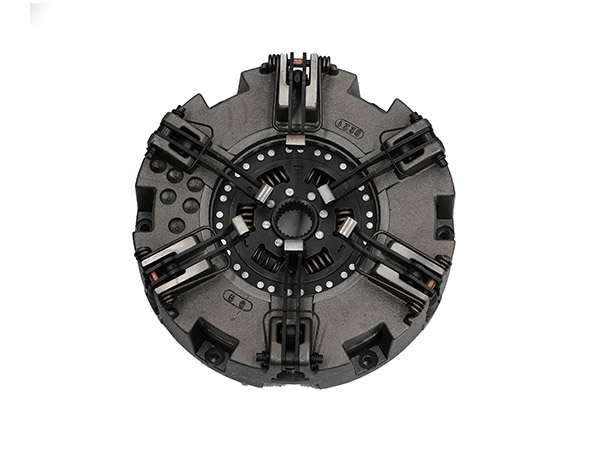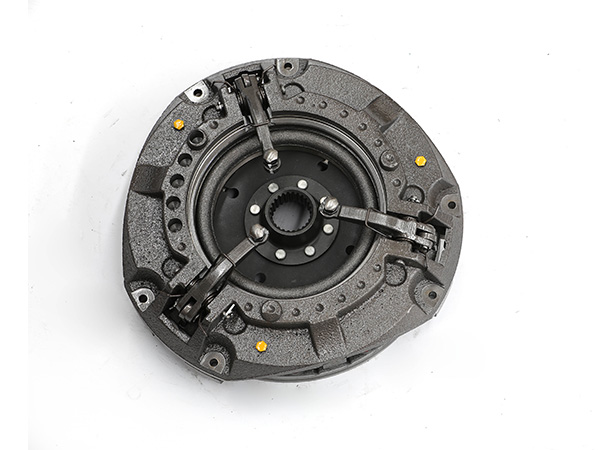Most of the steering mechanisms of crawler tractors are steering clutches. When the tractor is performing deep soil preparation or sowing operations, failures such as slippage of the steering clutch, incomplete separation or inability to separate the locomotive often occur, resulting in difficulty in steering and deviation of the locomotive, which not only affects the work, but also wastes power and increases operating costs. In this case, it is necessary to find out the reasons in time to eliminate them, so as not to affect the normal operation of the locomotive. The common tractor steering clutch failures mainly include the following.
Clutch slip
The clutch slips and the forward speed of the tractor is reduced. When the steering lever on one side is pulled to control the steering, the steering clutch on the other side is swept away, the tractor cannot be steered, and makes a “click, click” sound, the operation is difficult, the work efficiency is reduced, and the steering clutch is burned.
Reason
(1) Cultivated land is often a partial traction operation. In order to prevent the right crawler from falling into the furrow, the driver often turns the left steering rod, which causes the early wear of the left friction plate, the wear of the friction plate becomes thinner, and the passive plate Exposed rivets.
(2) The foot brake is used before the steering clutch is completely separated, or the steering clutch is engaged before the brake is released, resulting in an increase in the strength of the inner and outer springs of the steering clutch and insufficient spring compression force.
(3) The clutch enters the oil, leaks into the gear oil from the central drive or the final drive, and leaks into the grease and diesel oil from the oil tank.
(4) The joystick has no free travel, the tractor is operated unreasonably, and the locomotive is overloaded for a long time.
Method of exclusion
Check the joystick and check it every 50-60 hours. Don’t use too much force when pulling the steering lever, and release it quickly and steadily.
If oil is found to stick to the driving piece and the driven piece, it should be cleaned with a metal cleaner. The cleaning work is best done immediately after the work is finished, because the driving piece and the driven piece are very hot at this time, and the oil is easy to wash off.
At the end of each shift, the oil drain plug of the isolation room should be opened, the leaked gear oil should be released, and the cause of the oil leakage should be checked.

Steering clutch not fully disengaged
The effective stroke of the joystick is too small. Although the joystick is pulled hard when turning, it still cannot reach the full stroke, which makes it difficult for the tractor to turn.
Reason
(1) The total thickness of the steering clutch friction plate (the size from the active drum to the pressure plate after assembly) is too large, and the pressure plate and the release bearing are close to the partition. When the steering clutch is disengaged, the disengaging bearing dial quickly touches the partition plate, the control lever cannot be pulled, the effective stroke becomes smaller, and the disengagement is not complete.
(2) Where the steering clutch release fork rod and the two lugs of the release bearing sleeve cooperate, the release fork rod and the fork rod seat are worn. When the joystick is pulled, the fork arm is quickly pressed against the active drum pressure plate (even the pressure plate is ground with groove marks), which makes the joystick stroke smaller and cannot be completely separated.
(3) The installation inclination of the steering clutch release lever is incorrect. When the joystick is pulled to turn, the joystick cannot reach the full stroke, and when the clutch is not completely separated, the spherical groove of the separation lever and the ball head of the separation push rod are stuck, and the steering clutch is not completely separated.
(4) The missing support washer or the assembled support washer is too thin and damaged, which makes the steering clutch assembly have a free movement on the rear axle shaft. When the lever is pulled, the steering clutch does not disengage, but leans against the partition. The steering clutch also doesn’t fully disengage when the lever is pulled to full travel.
(5) There is too much sediment and dirt in the shaft of the joystick and the shaft sleeve, the shaft is too tight or stuck in the sleeve, the stroke of the joystick is too small, and the separation is not complete.
(6) The frame along the beam, the bracket is deformed or broken, the front fulcrum bolts of the gearbox or the connecting bolts between the gearbox and the rear axle housing are loose, and the fixing bolts of the joystick shaft bracket are loose or broken, etc., which will increase the free travel of the joystick. , the effective stroke becomes smaller, and the steering clutch is not completely separated.
Method of exclusion
(1) If the total thickness of the steering clutch friction plate is too large, it should be re-checked to find out the cause of the excessive thickness. If the newly riveted friction plate does not meet the requirements (too thick), the friction plate of the standard thickness should be riveted again. piece. Ensure that the total thickness is within the technically allowable range.
(2) If it is caused by the wear of the separation fork rod, etc., the wear parts can be repaired or replaced to restore the normal positional relationship between the separation fork rod and the separation bearing sleeve, the separation rod and the fork rod seat.
(3) If the installation inclination of the steering clutch release lever is incorrect, reinstall the release lever so that the installation inclination is within the standard range.
(4) If the support washer is missing or the assembled support washer is too thin or damaged, a qualified support washer should be re-installed to eliminate the free gap of the assembly on the rear axle shaft.
(5) After inspection, if the frame is deformed or broken along the beam or bracket, it should be corrected and repaired or replaced with new parts; if the bolts at each point are loose, they should be tightened as required, and new bolts should be replaced if the bolts are broken.
In summary, it can be seen that the incomplete separation of the steering clutch is caused by the fact that the effective stroke of the joystick is too small and the free stroke is too large. In use, the frequency of use of the steering clutch is the highest.
High-frequency engagement and separation will naturally accelerate wear. Therefore, in order to ensure its technical performance, attention should be paid to frequently check and adjust the effective stroke and free stroke of the joystick to keep it within the standard range.

Steering clutch does not disengage
The tractor cannot steer to one side.
Cause of issue
(1) The separation fork is broken or the end is severely worn out and the dial is pulled out.
(2) The pressure plate nut lock ring is broken, and the nut is loose or damaged.
(3) The supporting gasket is missing.
Method of exclusion
(1) Check whether the release fork is out of the dial ring. If it is separated, it proves that the release fork and other parts are seriously worn; if it is a newly replaced release fork, the release fork may be a substandard product.
(2) Check whether the clutch pressure plate nut is loose or damaged. If it is loose, it should be tightened. If it is damaged, replace it with a new one. If the lock ring is broken, it must be replaced.
(3) Pay attention to the following issues when assembling the steering clutch:
a. When installing the main and driven pieces, the first piece close to the cutting groove of the driving drum must be installed with the driven piece.
b. Install 10 pieces of main and driven pieces each, and the total thickness is within the specified range. When it is super thick, the super thick driven piece should be ground under the surface grinder or use the old piece that meets the requirements. It is not allowed to reduce the driving piece or the driven piece. Because reducing the driven plate will reduce the maximum transmission torque of the steering clutch, the torque will be reduced by about 1/10 for every reduction of one plate.
c. Periodically check and adjust the free travel of the joystick.
d. Periodically drain the oil accumulated in the steering clutch chamber.
The above is the relevant content about the common faults of the tractor steering clutch. If you encounter problems during the operation, you must first find the root of the problem, and then make targeted improvements according to the problem, so as to improve the working efficiency of the tractor clutch to a certain extent.


